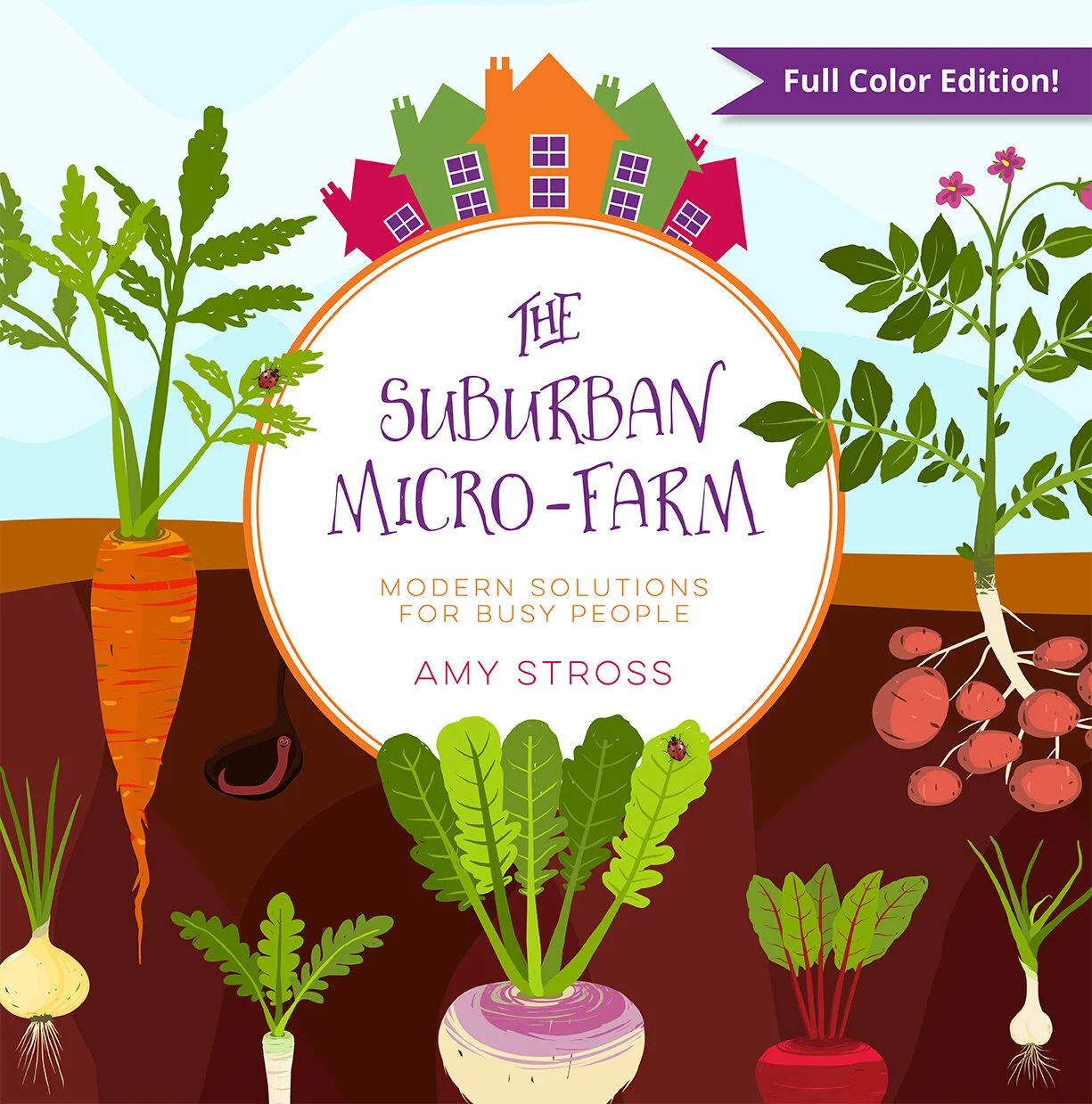How to Create an Herb Spiral
By Amy Stross
An herb spiral is a compact, vertical garden design that makes it possible to grow a lot of herbs in a small space. I like to use this technique for growing culinary herbs outside the back door, so I can grab herbs quickly while cooking. Just a small handful of fresh sage leaves—for example—can really pack favor into a soup or casserole. The convenience of a back-door herb spiral makes it more likely that I’ll use the herbs, and considering the nutrient density of small amounts of herbs, this is good news!
Other people might like to use an herb spiral for growing a medicinal garden by the back door so that its first aid benefits are conveniently located when needed.
Coiled like a snail shell, an herb spiral winds up and around, with the center of the coil being the highest point of the growing bed. While an herb spiral can be of any size, it is generally a mound that is 18 inches to three feet tall at its central, topmost point, and about five to seven feet in diameter. The spiraled coil is usually outlined with rocks or bricks.
The height of the bed creates micro-ecosystems because there are sections facing in each direction, with some sections (south and west) receiving more sun than the north- and east-facing sections. Additionally, the lower sections will stay moister longer, while the tallest point will be the driest. This allows you to grow a large diversity of herbs. For example, rosemary, sage, and thyme will enjoy the sunny, dry sections, with herbs like basil, chives, cilantro, and parsley enjoying the partial shade and moisture of the northern, and lower sections. Oregano and marjoram are versatile and can work well wherever there is space.
In a medicinal herb spiral, lavender and thyme will grow nicely in the sunny, dry sections while comfrey and lemon balm will enjoy the moister, shadier sections. Dandelion and garlic are more versatile and can be placed wherever there is space.
When I first started gardening, herbs seemed like accessories that were nice to have, but not essential to the craft of growing fruits and vegetables. Now I know that seasoning food, growing my own medicine, and contributing to a healthy ecosystem are just as important. Herbs will always be an essential component of my garden, and if by chance I find myself too busy to grow vegetables, I will delight in still having my herbs.
How to build an herb spiral
Materials
Hoe, hard rake, or fat shovel
Cardboard to cover 20 square feet
25 cubic feet (about 1 yard) of any combination compost soil, worm castings, homemade compost, chemical-free aged manure, or aged leaf mold
Bricks or rocks for border
48-pound bag leveling sand (optional)
Stakes or sticks
String
2 (5-gallon) buckets of pea gravel
Herb seedlings
Instructions
1. Locate the area where you would like to construct the herb spiral and measure a circle that is 5 feet in diameter to be sure it clears buildings and sidewalks.
2. Use the hoe or shovel to level the area, and remove any woody plants and vines.
3. Lay cardboard over the area, overlapping the ends by 6 inches to ensure that weeds don’t creep through. Non-woody vegetation will be killed by the cardboard, so no need to remove it.
4. Locate the center again and carefully insert a stake through the cardboard. Tie string to the stake and measure a piece that extends 2.5 feet from the stake and cut the rest off.
5. Use the string as a guide to outline the perimeter of the circle with bricks, orienting the bottom of the spiral to face south.
6. Lay out the shape of the spiral with the bricks, keeping an even width of the growing area throughout (about one foot wide).
7. Locate the outer-most, beginning point of the spiral. From that point, lay a piece of string across the garden in a straight line, essentially drawing a diameter line that cuts the spiral in half along the north-south line. Use stakes or sticks to mark points along this line.
8. Now it’s time to use the bricks to gradually up the height of the border using the stakes as a guide, so that the middle point of the spiral is the highest point.
9. Build the wall two bricks high between the outermost points of the diameter. Following the spiral toward the center, build four bricks high between the points along the diameter. The next section along the spiral will be six bricks high. Finally, the last, topmost section of the spiral will be eight bricks high. Use leveling sand between the layers of bricks for a sturdier ft.
10. In the northern-most half of the spiral, add the pea gravel on top of the cardboard, making it gradually deeper to mirror the increasing height of the bricks. The pea gravel will help to stabilize the taller sections of wall, and it will also allow good drainage for the herbs that enjoy the highest and driest spots.
11. Now fill in the herb spiral (on top of the cardboard and pea gravel) with layers of organic soil material to match the height of the bricks. Water everything in or wait for a good rain to settle the contents of your herb spiral, then check the level of soil again and fill to match the height of the bricks.
12. Time to plant! Lay out the herbs, matching each herb to the conditions that it prefers (hot/dry, shady/ moist). Be sure to give your plants proper spacing.
Your herb spiral will last a long time, be a low-maintenance treasure, and produce abundantly. Enjoy!
This blog post is a sneak peek inside The Suburban Micro-Farm by Amy Stross, owner of www.TenthAcreFarm.com. Reprinted with permission from the author via Twisted Creek Press and Chelsea Green Publishing Company.
Sign Up for Newsletter
Follow Us on Social
Order ClimateGard™ Bio Organic Fertilizer
Cutting-edge microbiology
No kill formula
Superior plant nutrition derived from the most ethical, sustainable sources available.
Produces the same results as conventional fertilizers without the negative environmental impacts.
Each ClimateGard pellet is infused with micronutrients, silicon, humic acid and a high-performance blend of living bacteria and fungi.
Delivered in an environmentally friendly organic cotton bag with a compostable inner liner.
Will continue to enrich your soil long after application.
$39.95 for 7.5 pound bag | $69.95 for 15 pound bag.



